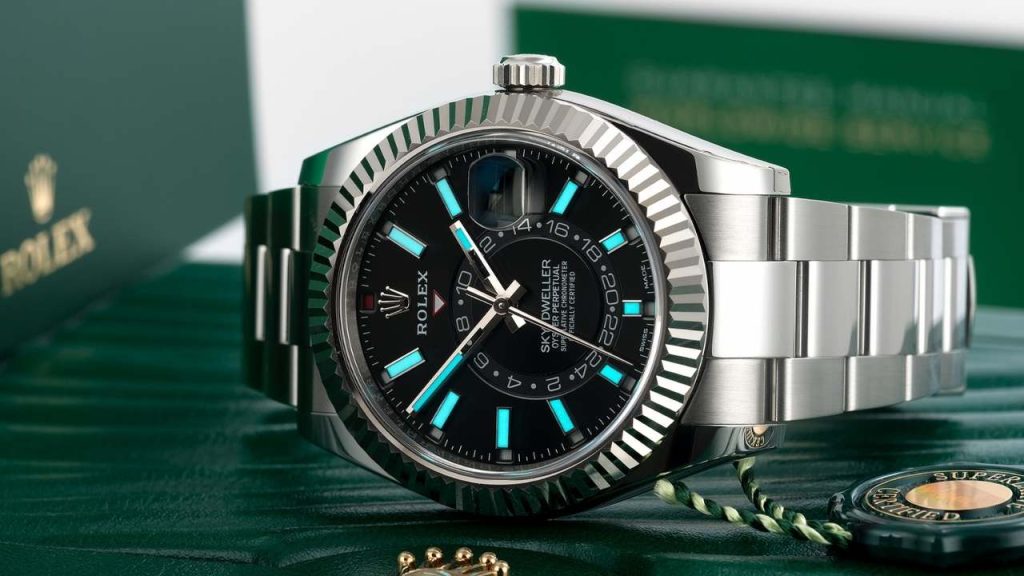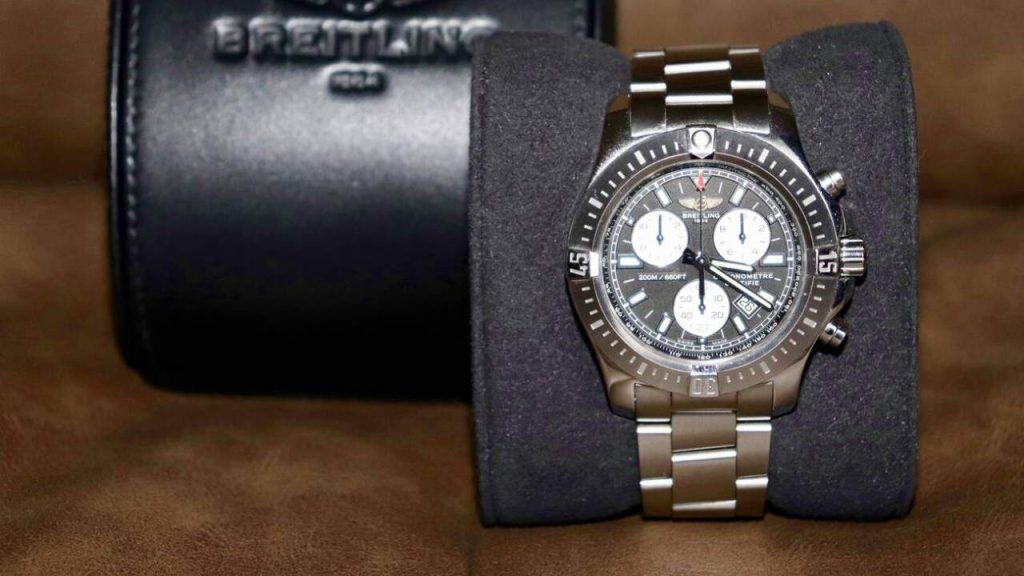Ever dreamt of strutting around with a luxury watch on your wrist, but choked on the price tag? You’re not alone.
In fact, this is how most people discover about Grey Market Watches.
Grey market watches refer to the buying and selling of watches outside of the official distribution channels established by watch manufacturers. This means these watches are not sold directly by the brand or authorized dealers. Instead, they are acquired through third-party sellers (often online).
The grey watch market is bigger than most people expect it to be. In 2017, Chrono24 (with many grey market sellers) had over 1B USD transactions.
As a matter of fact, about a quarter of all luxury watches are sold via the grey market.
But since grey market watches are not counterfeit, stolen, or used, the discounted price tag often seems too good to be true.
There in this article, I’ll explain everything you’ll need to know about grey market watches.
Table of Contents
- 1 Grey Market Watches: The Line between White and Black Market
- 2 Grey Market Watches Selling? How does this Process Work?
- 3 Pros and Cons of Grey Market Watches
- 4 The Online Grey Market Watches Landscape
- 5 Manufacturer’s Response to Grey Watch Market
- 6 Should you buy a Grey Market Watch?
- 7 Closing Thoughts
Grey Market Watches: The Line between White and Black Market
In the trade watch markets, three classifications often surface – the white, black, and grey market watches.
The white watch market, predominantly, represents the official authorized distribution channels set by manufacturers and distributors.
This constitutes all products sold legally, with appropriate warranties, after-sales services, and by jurisdictional regulations.
The process starts with finding the authorized dealer (mentioned on the specific luxury brand website).
You then go to the dealer and ask them about watches, they put on the list, and the typical watch-buying process.
The black market is synonymic with illicit trade. It consists of all commercial transactions that violate laws, restrictions, taxes, and embargoes in some form.
These can include selling counterfeit watches, stolen merchandise, or watches purchased with stolen credit cards.
But in between the straightforward legality of the white market and the clandestine operations of the black market, resides the grey market.
Grey markets comprise authentic watches sold outside authorized distribution channels.
Typically, these watches are acquired from authorized dealers who aim to rotate their inventory, selling off older pieces without including the warranty cards.
This practice helps maintain discretion, preventing the traceability of the transaction back to the dealer.
It is done to avoid any negative associations with selling to individuals who aren’t regular customers.

Grey Market Watches Selling? How does this Process Work?
Grey market watch sellers typically acquire watches in bulk. The sources include authorized dealers or distributors in different countries, auctions, or closeout sales.
The practice hinges on the principle of arbitrage where disparities in pricing due to currency fluctuations, demand-supply imbalance, and taxation laws in different regions are capitalized.
For instance, if a specific luxury timepiece is priced significantly lower in Asia than in Europe due to lesser demand, a grey market dealer may buy it in bulk from Asian dealers and sell it at a profit in the European market, while still offering it at a lower price than the official European price.
The legality of grey market selling comes into question often.
However, it’s crucial to understand that grey market dealings are legal to buy. They exist primarily because of the globalized nature of commerce and trade.
These sellers are not affiliated with the brands and are often restricted via fine print from offering the manufacturer’s warranty. Instead, these retailers provide their own warranty service.
Despite being frowned upon by manufacturers and sometimes buyers, these transactions reside within the bounds of legal. The reason is it doesn’t involve counterfeited goods or tax evasion.
Pros and Cons of Grey Market Watches
The biggest benefit of getting a watch from the grey market is the price.
The average discount tag on luxury watches in the grey market lies somewhere between 30-60%.
But this discounted price depends on the availability of the watch in the grey market. Rolex submariners, for example, will hardly get you a discount, because of its scarcity in the grey market.
In comparison, Omega and Tag Heuer will get some hefty discounts.

The availability of grey market watches also allows you to negotiate with the retailer as well.
Additionally, grey market watches can offer a wider selection, including models that may be discontinued or harder to find through authorized channels.
This allows buyers to explore a variety of options and choose a timepiece that truly reflects their personal style and preferences.
Grey Market Watches Drawbacks
Buying a grey market watch lacks the manufacturer’s warranty, often having a less comprehensive dealer warranty.
There’s a risk of encountering fake watches; caution and reputable dealers are crucial to avoid scams.
Additionally, grey market dealers may offer limited after-sales support, making servicing, repairs, and spare parts more challenging.
Purchasing from the grey market also means missing out on manufacturer relationships and exclusive events.
Moreover, grey market watches might have lower resale value, as some buyers prefer a complete, traceable purchase history.
These concerns highlight the trade-offs involved in opting for watches outside authorized channels.
The Online Grey Market Watches Landscape
The modern e-commerce boom has greatly expanded the grey market landscape, profoundly impacting the watch industry.
As with many other luxury goods, watches have found a thriving niche online where they can be sold globally with relative ease.
This digitization of the grey market has significantly increased its scope and reach, enabling these sellers to offer a plethora of brands and models.
Here are some popular online grey watch market platforms.
- Chrono24
- Jomoshop
- Watchbox
Manufacturer’s Response to Grey Watch Market
It’s logical to think that watch retailers and brands would be in bad faith with the grey watch market.
But different practices exist.
Some companies have adopted strict policies to stem the flow of their products into this parallel market.
They are taking direct measures such as curtailing the number of units sold to wholesalers, strictly monitoring authorized sellers, and setting up dedicated inspection teams.
In some cases, warranties of timepieces distributed through the grey market are declared void, reinforcing their stand against such unconventional trade routes.

However, most watchmakers are not reacting negatively to the grey market.
Some have identified it as a symptom of inflated retail prices, which are beyond the reach of ordinary consumers.
Understanding the economic factor, these brands are re-evaluating their pricing strategies, concerning their market positioning and value proposition.
While this large secondary market may symbolize a loss of control for watch brands, it simultaneously offers an exciting opportunity for them to interact with a different group of watch lovers that otherwise remained inaccessible.
Grey market watches are the reason, Rolex keeps their production to the minimum, making them a highly sought-after brand.
Should you buy a Grey Market Watch?
Grey Market watches are readily available online and in physical stores across the globe.
The prices are low and this provides an enticing reason to consider buying from the grey market.
However, it’s essential to tread with caution.
While the economic advantage of grey market watches seems appealing, buyers must bear in mind the potential risks.
One such risk is the lack of a manufacturer’s warranty, making it challenging to address potential watch malfunctions or defects.
Furthermore, the authenticity verification of these watches may also be an issue, creating a possibility of inadvertent acquisition of counterfeit products.
The allure of lower prices can sometimes overshadow these considerations.
So, aspiring grey market watch buyers, are encouraged to conduct thorough research like looking at seller history, reputation, and reviews, and consider their options accordingly.
Closing Thoughts
Entering the world of luxury timepieces can be an intimidating experience, especially with the ambiguity and uncertainty the grey market presents.
Grey market dealers offer attractive prices for a wide array of highly sought-after luxury timepiece brands, raising intrigue for budget-conscious consumers.
The prospect of purchasing a Rolex, Omega, or Breitling timepiece, to name a few, at significantly less than retail price is enticing, you cannot deny it.
However, as we delve into the nuances of the grey market, we must weigh the attractive price point against the risks associated with such purchases.
Authenticity checks, warranty issues, and resale values are all factors to consider before venturing into grey market territory.
In the end, it’s about finding the balance between cost-saving and peace of mind, to ensure your luxurious timepiece is genuine and well worth the investment.

I am George. I am a watch enthusiast as far as I can remember.
My passion for horology extends beyond the surface, delving into the art, history, and precision that make each watch a masterpiece.
